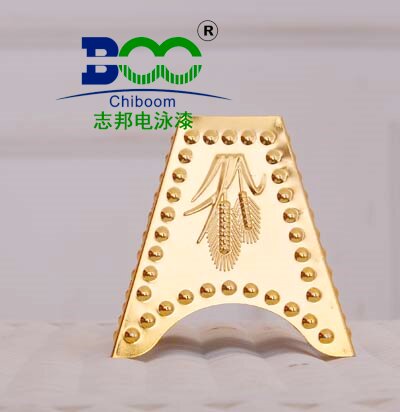What is the thickness standard of electrophoretic paint layer?
What is the thickness standard of electrophoretic paint layer?
Analysis of Standard Electrophoretic Paint Coating Thickness
As an essential coating technology, electrophoretic paint coating is widely applied across multiple industries, especially in automobiles, household appliances, and more. The quality of electrophoretic paint coating directly affects the corrosion resistance, appearance, and service life of the product. Among these factors, the thickness of the electrophoretic paint coating is a crucial parameter for evaluating its quality. This article will provide a detailed analysis of the standard range for electrophoretic paint coating thickness, aiming to enhance readers' understanding and application of this technology.
I. Basic Concept of Electrophoretic Paint Coating Thickness
The thickness of electrophoretic paint coating refers to the actual thickness of a uniform and dense electrophoretic paint film formed on the surface of a workpiece through electrophoretic coating technology. This thickness is an important indicator for evaluating the quality of electrophoretic paint coating, which directly impacts its corrosion resistance, appearance, and service life.
II. Standard Range of Electrophoretic Paint Coating Thickness
The standard range of electrophoretic paint coating thickness varies depending on the type of product and specific requirements. Generally, the thickness falls between 10 to 40 microns, with 20 to 30 microns being the common range. This range is based on empirical values considering factors such as the application field, type of paint, and composition.

Thickness of Electrophoretic Paint Coating for Common Products
Automotive products: Due to their high demand for corrosion resistance, the electrophoretic coating thickness for automotive products is generally above 20 microns, with some requiring a single-layer coating thickness of 35 to 60 microns or more. This ensures long-term stability under various harsh environments.
Household appliances: The electrophoretic paint coating thickness for household appliances is typically controlled between 20 to 30 microns, providing sufficient corrosion resistance and good appearance.
Other products: For other products such as hardware, building materials, etc., the electrophoretic paint coating thickness requirements are relatively lower, generally ranging from 10 to 25 microns.
Thickness of Electrophoretic Paint Coating for Special Requirements
For some special products, such as marine engineering equipment, chemical equipment, etc., due to their long-term exposure to harsh environments like high humidity and salinity, the corrosion resistance requirements for electrophoretic paint coating are extremely high. Therefore, the electrophoretic paint coating thickness for these products is generally above 40 microns or even thicker.
Additionally, for products requiring high gloss and smoothness, such as high-end household appliances and decorations, the electrophoretic paint coating thickness also needs to be increased accordingly to achieve a better appearance.
III. Control Methods for Electrophoretic Paint Coating Thickness
To ensure the uniformity and stability of electrophoretic paint coating thickness, certain control methods are necessary. Currently, commonly used control methods include:
Adjusting Electrophoretic Coating Process Parameters: Parameters such as voltage, current density, and electrophoretic time have a direct impact on the thickness of electrophoretic paint coating. By adjusting these parameters, the thickness can be controlled.
Using Thickness Measurement Instruments: During and after the electrophoretic coating process, thickness measurement instruments can be used to monitor and measure the thickness of electrophoretic paint coating in real-time. This helps to detect and correct thickness deviations promptly, ensuring the uniformity and stability of the electrophoretic paint coating thickness.
IV. Conclusion
The thickness of electrophoretic paint coating is a crucial parameter that affects its quality. In practical applications, it is necessary to select an appropriate thickness range based on the type of product and specific requirements, and adopt certain control methods to ensure the uniformity and stability of the electrophoretic paint coating thickness. Through scientific and reasonable electrophoretic coating processes and strict quality control, high-quality electrophoretic paint coatings can be obtained, improving the corrosion resistance, appearance, and service life of the product.





 WeChat
WeChat